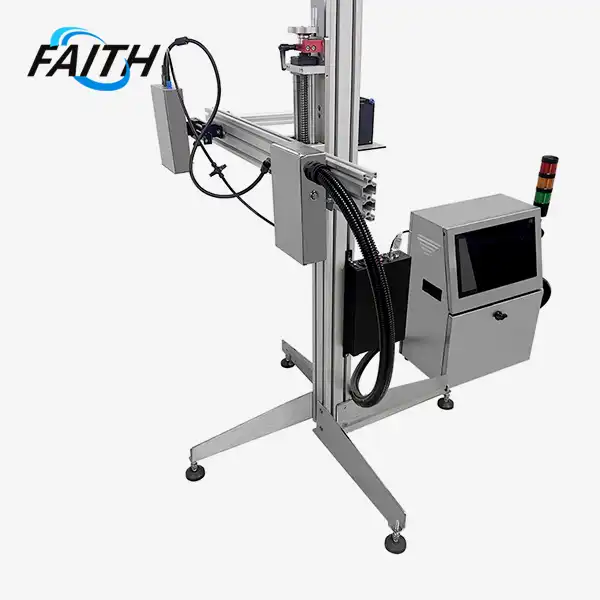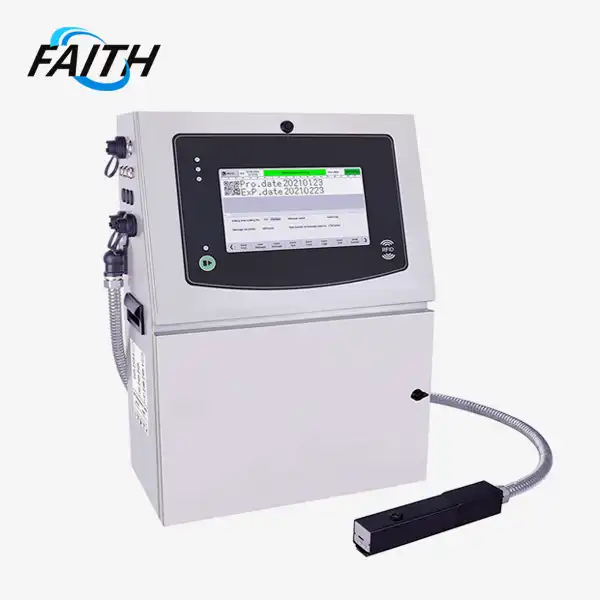How Date Coding Can Improve Your Product Tracking?
In today's fast-paced manufacturing world, efficient product tracking is crucial for maintaining quality control, ensuring regulatory compliance, and optimizing supply chain management. One of the most effective tools for achieving these goals is date coding, particularly when implemented using Continuous Inkjet (CIJ) printers. This article explores how date coding with CIJ printers can significantly enhance your product tracking capabilities, leading to improved operations and customer satisfaction.
The Importance of Date Coding in Modern Manufacturing
Date coding is more than just stamping a production or expiration date on a product. It's a vital component of product traceability, quality assurance, and inventory management. By incorporating date codes, manufacturers can track products throughout their lifecycle, from production to distribution and beyond.
In industries such as food and beverage, pharmaceuticals, and cosmetics, date coding is not just beneficial—it's often mandatory. Regulatory bodies worldwide require clear and accurate date information on products to protect consumer safety and ensure product freshness. Moreover, date coding aids in recall management, allowing companies to quickly identify and retrieve specific batches if issues arise.
The advent of CIJ printing technology has revolutionized date coding processes. CIJ printers offer unparalleled versatility, allowing for high-speed, non-contact printing on various substrates, including plastic, glass, metal, and paper. This adaptability makes CIJ printers an ideal solution for diverse manufacturing environments.
Enhancing Traceability with CIJ Date Coding
Implementing date coding with CIJ printers can dramatically improve your product tracking capabilities in several ways:
- Precision and Consistency: CIJ printers deliver highly accurate and consistent date codes, even at high production speeds. This precision ensures that every product carries clear, legible information, reducing the risk of misinterpretation or tracking errors.
- Flexibility in Code Content: Beyond simple date stamps, CIJ printers can apply complex codes including batch numbers, serial numbers, and even QR codes. This flexibility allows manufacturers to encode a wealth of tracking information in a small space, enhancing traceability throughout the supply chain.
- Real-time Updating: Many modern CIJ systems integrate with production management software, allowing for real-time updates to coding information. This feature ensures that date codes and other tracking data are always current and accurate, even in fast-paced production environments.
- Durability: CIJ inks are designed to adhere well to various surfaces and resist fading, smudging, or rubbing off. This durability ensures that tracking information remains legible throughout the product's lifecycle, from production to end-use.
- Adaptability to Production Lines: CIJ printers can be easily integrated into existing production lines without significant disruption. Their non-contact printing method allows for coding on products moving at high speeds, maintaining production efficiency while improving traceability.
Maximizing the Benefits of Date Coding with CIJ Technology
To fully leverage the advantages of date coding with CIJ printers for product tracking, consider the following strategies:
- Implement a Comprehensive Coding Strategy: Develop a coding strategy that goes beyond basic date information. Include batch numbers, production line identifiers, and even encrypted data to create a robust tracking system.
- Integrate with Inventory Management Systems: Connect your CIJ printers with your inventory management software to automate tracking processes. This integration can provide real-time visibility into production volumes, expiration dates, and stock locations.
- Utilize Variable Data Printing: Take advantage of CIJ printers' ability to print variable data. This feature allows for unique identifiers on each product, enabling item-level tracking and enhancing anti-counterfeiting measures.
- Optimize Ink Selection: Choose inks that are not only compatible with your substrate but also offer the necessary durability for your product's lifecycle. Some inks can withstand extreme temperatures, moisture, or chemical exposure, ensuring long-lasting traceability.
- Regular Maintenance and Calibration: To ensure consistent print quality and accuracy, implement a regular maintenance schedule for your CIJ printers. This practice will help maintain the reliability of your date coding and tracking system.
- Staff Training: Invest in comprehensive training for your staff on the proper use and maintenance of CIJ printers. Well-trained operators can maximize the efficiency of your date coding processes and quickly troubleshoot any issues that arise.
- Continuous Improvement: Regularly review and update your date coding practices. As technology evolves and regulations change, your tracking system should adapt to remain effective and compliant.
By implementing these strategies, manufacturers can create a robust, efficient product tracking system that leverages the full potential of date coding with CIJ printers. This approach not only improves operational efficiency but also enhances product safety, reduces waste, and builds consumer trust.
The integration of date coding using CIJ printers represents a significant leap forward in product tracking capabilities. Its benefits extend across various industries, from food and pharmaceuticals to automotive and electronics. By providing clear, durable, and flexible coding options, CIJ technology enables manufacturers to meet regulatory requirements, improve quality control, and streamline their supply chain operations.
As the manufacturing landscape continues to evolve, the importance of effective product tracking will only grow. Date coding with CIJ printers offers a scalable, adaptable solution that can meet the challenges of today's fast-paced production environments while preparing businesses for future demands.
Conclusion
Date coding with CIJ printers is more than just a regulatory requirement or a quality control measure—it's a powerful tool for enhancing product tracking and overall manufacturing efficiency. By implementing a comprehensive date coding strategy using CIJ technology, manufacturers can improve traceability, reduce errors, and build stronger relationships with their customers and partners throughout the supply chain.
As you consider upgrading your product tracking capabilities, remember that the right technology partner can make all the difference. Shenyang Faith Technology Co., Ltd. offers cutting-edge CIJ printing solutions designed to meet the diverse needs of modern manufacturing. Our team of experts is ready to help you implement a date coding system that will transform your product tracking processes.
For more information on how our industrial UV inkjet coding and traceability system solutions can benefit your operations, please contact us at sale01@sy-faith.com. Let us help you take your product tracking to the next level with advanced date coding technology.
References
1. Robertson, G. L. (2016). Food Packaging: Principles and Practice. CRC Press.
2. Yam, K. L., & Lee, D. S. (2012). Emerging Food Packaging Technologies: Principles and Practice. Woodhead Publishing.
3. Doyle, M. P., & Buchanan, R. L. (2013). Food Microbiology: Fundamentals and Frontiers. ASM Press.
4. Regattieri, A., & Santarelli, G. (2013). The Important Role of Packaging in Operations Management. IntechOpen.
5. Fellows, P. J. (2009). Food Processing Technology: Principles and Practice. Woodhead Publishing.
Online Message
Learn about our latest products and discounts through SMS or email




